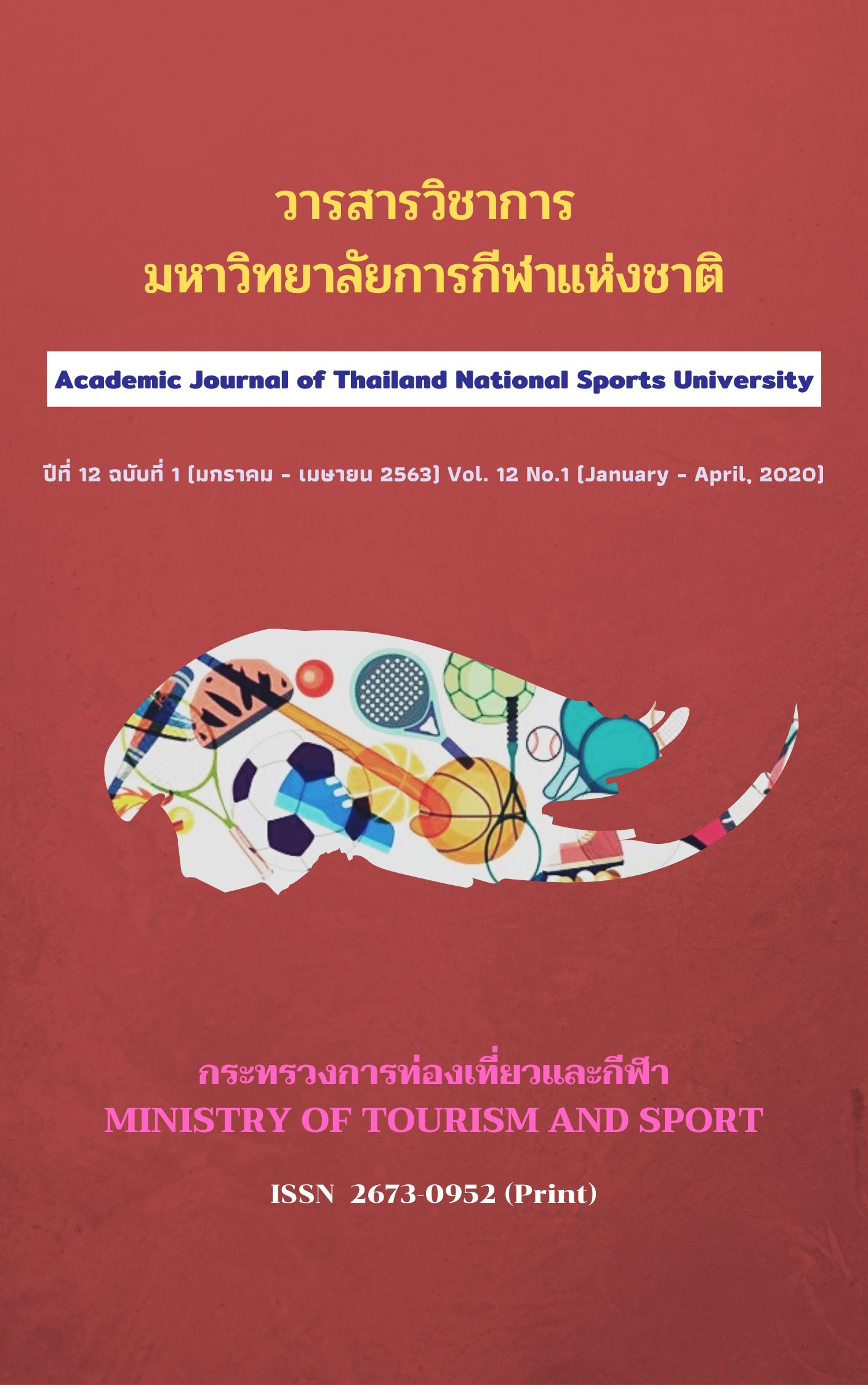EXHIBITORS’ PERSPECTIVES ON COMPETITIVENESS OF EXHIBITION INDUSTRY IN THAILAND
Main Article Content
Abstract
Among the growth of global exhibition industry, Asia is strongly positioned to remain one of the most attractive trade fair markets worldwide. Despite the positive direction of the country’s large market size and revenue in its sub-region, Thailand is facing intensive competition both in existing, and high potential new entrants from emerging ASEAN countries. Therefore, the country needs to review its position in regard to competitiveness.
The purpose of this study was to explore competitiveness attributes of exhibition industry in Thailand from exhibitors’ perspectives. This study employed quantitative method to explore competitiveness attributes of exhibition industry in Thailand from exhibitors’ perspectives. The questionnaire survey was conducted at 14 international exhibitions in Thailand during 2015 and 2016. The result of EFA determined three competitiveness factors which were: - 1) exhibition attributes, 2) destination attributes, and 3) enabling environment.
The result showed that Thailand’s exhibition industry has weaknesses in destination and enabling environment factors. These factors are concerning about the facilitation of the country towards the exhibition industry. Therefore, it is recommended to focus more on improving enabling environment to facilitate the ease of doing business in Thailand. Although the roles of government must be highly involved to support those factors, the collaboration among stakeholders is also vital to drive its competitiveness.
Article Details
The published article is a copyright of the Academic Journal of Thailand National Sports University. The passage appeared in each article in this academic journal is a perspective of each author which is not related to the journal. Each author is required to be responsible for all components of his/her own article. If there are any mistakes, each author must be responsible for those mistakes on his/her own.
References
Cattell, R. B. (1966). The screen test for the number of factors. Multivariate behavioral research. 1 (February), 245-276.
Child, D. (2006). The Essentials of Factor Analysis. (3rd ed.). New York: Continuum.
Conway, J. M., and Huffcutt, A. I. (2003). A review and evaluation of exploratory factor analysis practices in organizational research. Organizational Research Methods, 6 (April), 147-168.
Costello, A. B., & Osborne, J. (2005). Best practices in exploratory factor analysis: Four recommendations for getting the most from your analysis. Practical Assessment, Research and Evaluation, 10(1), 7.
Gorsuch, R. L. (1983). Factor Analysis. (2nd ed.). New Jersey: Erlbaum.
Henson, R. K., & Roberts, J. K. (2006). Use of exploratory factor analysis in published research: Common errors and some comment on improved practice. Educational and Psychological Measurement, 66(3), 393-416.
Kaiser, H. F. (1960). The application of electronic computers to factor analysis. Educational and Psychological Measurement, 20, 141–151.
Nunnally, J. C. (1978). Psychometric Theory. New York: McGraw Hill.
Pongsatorn Limpanawetsakul and Thirawat Chuntuk. (2016). Human resources development in exhibition. Veridian E-Journal, Silpakorn University, 9(1), 1327 – 1335.
Rarintorn Wata. (2010). Determinants of Thailand’s exhibition destination competitiveness in Asia. (Master’s thesis). Chulalongkorn University, Bangkok.


